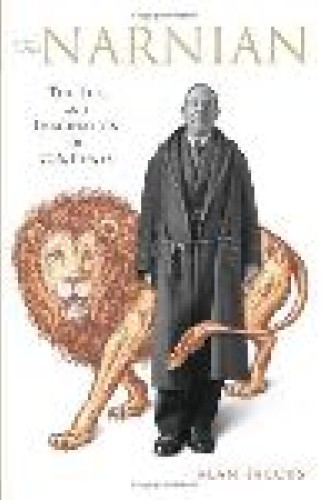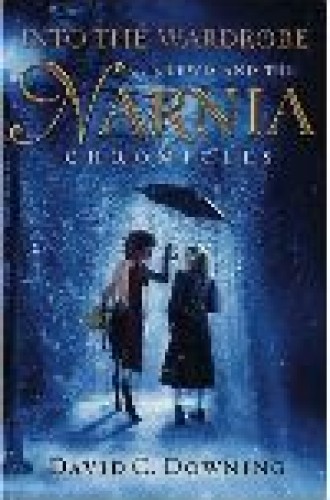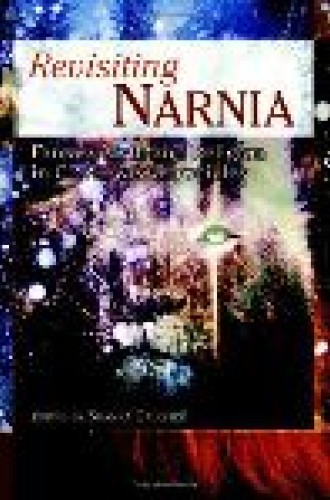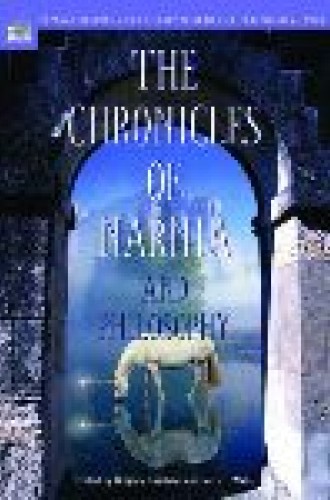Entering Narnia
Given the much anticipated release next month of the film version of C. S. Lewis’s The Chronicles of Narnia: The Lion, the Witch and the Wardrobe, one might expect a glut of books on Lewis and Narnia. The books cited here suggest the many angles of vision and academic disciplines from which Lewis’s work generally and the Chronicles in particular continue to receive serious attention.
It has for years been something of a mystery to me that Lewis’s life is of so much interest to his readers; for, truth to tell, not a lot happened in the life. (“I like monotony,” Lewis once told Time magazine.) Nonetheless, Alan Jacobs has given us another biography—which is certainly better than many already available, and which at several places helpfully corrects the pop psychology advanced a decade and a half ago in A. N. Wilson’s eccentric biography.
There are places where Jacobs’s work also seems flawed. His discussion of several theological points is more assured than nuanced, and any biographer today owes his readers some insight into claims of the late Kathryn Lindskoog that a few of Lewis’s posthumously published essays and fragments are inauthentic (and, not to put too fine a point upon it, forgeries). One need not accept those claims, but one must help readers to understand them.
Although Jacobs treats the whole of Lewis’s life and writing, his biography always keeps an eye on the Narnia stories. (Even biographers are allowed to pay some heed to publishers’ marketing concerns.) The question animating his narrative is, as he puts it, “what sort of person wrote the Chronicles of Narnia?” The central theme of his answer turns on the tension (and eventual reconciliation) of reason and imagination in Lewis.
This is not a new insight—Corbin Carnell treated it more than 30 years ago in Bright Shadow of Reality, whose subtitle was the nicely phrased “C. S. Lewis and the Feeling Intellect,” and David Downing also emphasizes it in his new book—but Jacobs uses this narrative thread to good advantage in uncovering continuity in Lewis’s life. And, of course, it is imagination above all that is on display in the creation of Narnia.
Why, one might wonder, did Lewis write these stories? One thesis, offered by more than one writer, rests on the claim that Lewis gave up entirely his interest in reasoned apologetics after a 1948 debate with Elizabeth Anscombe at a meeting of the Oxford Socratic Club. The claim—proffered by Wilson, for example—is that Anscombe’s criticism of Lewis’s argument in chapter 3 of Miracles was so devastating that Lewis’s confidence in rational argument was thoroughly shaken, leading him to turn away from reason to a world of imagination. What there is to be said for this hypothesis Victor Reppert notes in a carefully argued essay (in The Chronicles of Narnia and Philosophy), even as he also notes the enormous flaws in it.
If not for this reason, then why did Lewis write the Chronicles? It might be best for us simply to appeal to the Muse, but there are other factors which deserve mention. Reppert notes, as does Downing, the possible influence and example of Lewis’s friend J. R. R. Tolkien. Downing also calls attention to the images that had been incubating for years in Lewis’s fertile imagination and that suddenly came to life in the Narnia stories, and Jacobs suggests that we should hardly be surprised when a writer with a long record of concern for moral education turns to writing stories for children.
Jacobs also helpfully reminds readers of what was actually happening in Lewis’s life when he first began to write these stories. He was, for one thing, exhausted from his work and the demands of his everyday life, and when exhausted, Lewis had always turned for renewal to fantasy and romance. Why not write the sort of book he loved to read?
He was also, Jacobs notes, increasingly famous. With that fame, however, came the frustrations of being looked to by many as a kind of “answer man.” And he must have remembered how he himself had come to faith—not simply because he had been convinced by argument but, in large measure, because the Christian faith struck him as a “myth” that had actually become “fact.”
When Lewis did put pen to paper, the seven stories of the Chronicles were produced—even for a writer as fluent as Lewis—in an astonishingly rapid burst of creativity (with the publication of the first in 1950 and the seventh in 1956). There were a few false starts along the way—especially with respect to The Magician’s Nephew—and readers interested in tracing the course of Narnia’s creation will profit from Downing’s discussion in Into the Wardrobe.
In my view we can be thankful that Disney has decided to begin with The Lion, the Witch and the Wardrobe rather than following the renumbering that has been used in the HarperCollins editions of the Chronicles in recent years. Anyone doubting that, at least as an imaginative reading experience, the Chronicles are best read in the order of their original publication will have to come to terms with Peter Schakel’s illuminating discussion in his essay in Revisiting Narnia. He demonstrates, with the skill of an experienced reader and literary critic, that reading the stories in the order of their original publication leaves intact “gaps” which readers gradually fill as they read further in the Chronicles. Some of these are simple and obvious: one has to wait to learn why that strange lamppost should be standing in the middle of a Narnian forest. Others are of deep significance. Schakel notes, for example, how, if one has not first read The Magician’s Nephew, Aslan begins as a mysterious (named but unseen and hardly known) presence in Narnia. Only gradually as the stories unfold is that gap filled in such a way that readers can truly be told of Aslan that the longer you know him the bigger he gets.
Indeed, filling in that gap may help to explain—for this reader, does help to explain—at least part of what makes the Chronicles so alluring as a work of Christian literary imagination. I myself doubt that the Narnia stories will ever really appeal to the aesthete or the narcissist in each of us; they—and Aslan—are far too morally serious and demanding for that.
I am not certain what makes many of the essays in The Chronicles of Narnia and Philosophy particularly philosophical (apart from the fact that they are written by people who teach philosophy), but several of these authors are acutely aware of how painful it may be to have one’s life transformed by Aslan. For example, Bill Davis calls attention to three episodes in which characters learn that while Aslan may be good, he is neither tame nor simply “kind.” Eustace is “un-dragoned” only when, his own efforts at transformation having failed, the Lion himself tears away the dragonish skin. Having only just arrived in Narnia, Jill finds that same Lion standing between her and the stream of water from which she very much wants to drink. He refuses to promise that he will leave her alone if she comes to drink—yet there is no other stream that can refresh her. (The path to the abundant life Aslan offers her is rather different from what one may sometimes hear from television preachers.) And third, and perhaps most poignantly, in obedience to Aslan’s command, Digory relinquishes the desire to pocket a magic apple which could, he suspects, cure his dying mother. If anyone were to read the whole of Lewis’s writings with an eye only to discover what biblical passage he most often cites, one would find, I suspect, that it would be “he that loseth his life . . . shall save it.”
The Lewis whose imagination produced these three episodes is the same Lewis who described himself in Surprised by Joy as having been dragged struggling and resentful into faith, “the most dejected and reluctant convert in all England.” He had been drawn toward God by his longing for joy, but when he found God “no slightest hint was vouchsafed me that there ever had been or ever would be any connection between God and Joy.” Lewis’s God draws us—Aslan draws us—because he is not tame, not to be trifled with. He asks not for a part of our life, but for the whole of it.
This God will, to be sure, make us happy—happy in ways we could never have imagined—but he is by no means simply the “welcoming” God so often put forward by Christians today. And the very fact that Aslan continues to entice and allure readers suggests that we ourselves want something more than that welcoming God. Downing’s discussion of the “spiritual vision” underlying the Chronicles captures quite nicely Lewis’s rejection of any “tame god,” whose kindness does not rise to the level of supreme goodness—and, therefore, is not really an answer to the deepest longing of our hearts.
Among Lewis’s most powerful writings are three that came very near the end of his life—Till We Have Faces, The Four Loves and A Grief Observed (each influenced in important ways by his having come to know and eventually to marry Joy Davidman Gresham). Each in its different way invites us to attend to that God whose goodness (like that of the dentist) sometimes hurts, who offers only heavenly comfort (because there is finally no earthly comfort), and who wounds our grasping and possessive nature simply by being Goodness itself. That vision went very deep into Lewis’s personal experience and into the recesses of his imagination. From those recesses came Narnia—that wonderful land upon which night must finally fall when Aslan says “now make an end.” From those recesses came Aslan—by no means a tame lion, but a good one. It is not easy to portray real goodness. Let us hope that Disney is up to the challenge.








